The Fabrication of Micro-Array Channels with the Ultrafine-Grained LZ91 Mg-Li Alloy by Micro-Embossing
Abstract
:1. Introduction
2. Materials and Methods
3. Results
3.1. Microstructure of UFG LZ91 Mg-Li Alloy
3.2. Micro-Embossing Process on UFG LZ91 Mg-Li Alloy
3.3. Surface Topography of the Embossed Micro-Channels
4. Discussions
4.1. Formability of Micro-Embossing at Elevated Temperatures for UFG LZ91 Mg-Li Alloy
4.2. The Potential Applications of UFG Mg-Li Alloy in Fabrication of MEMS Components
5. Conclusions
- (1)
- Micro-embossing processes are performed on the UFG LZ91 Mg-Li alloy processed by HPT by metal die, and the micro-array channels with widths ranging from 50 μm to 200 μm are fabricated under an applied force of 2 kN with a temperature of 423 K followed by a dwell time of 60 s. The results indicate that embossed micro-channels with all widths were clearly embossed well, with an excellent geometrical transferability without obvious disfigurement, and filled completely.
- (2)
- Micro-embossing of the CG LZ91 Mg-Li alloy produces micro-array channels that are 100 μm in width and are uneven with wrinkles, but the micro-embossing of the UFG LZ91 Mg-Li alloy at the same temperature produces smooth micro-channels. The patterns on the metal mold are fully transferred to the UFG LZ91 Mg-Li alloy plate.
- (3)
- Micro-embossing of UFG LZ91 Mg-Li alloy has good potential applications in mass fabrication of MEMS components. In the future, UFG materials with much finer grains will be used to fabricate much smaller channels.
Acknowledgments
Author Contributions
Conflicts of Interest
References
- Ottevaere, H.; Overmeire, S.V.; Albero, J.; Nieradko, L.; Desmet, G.; Gorecki, C.; Thienpont, H. Plastic light coupler for absorbance detection in silicon micro fluidic channels. Microfluid. Nanofluid. 2015, 18, 559–568. [Google Scholar] [CrossRef]
- Liu, Z.; Yi, Y.; Xu, H.; Zhang, X.; Ngo, T.H.; Smet, M. Cation-selective microcontact printing based on surface-molecular-imprinted layer-by-layer films. Adv. Mater. 2010, 22, 2689–2693. [Google Scholar] [PubMed]
- Geiger, M.; Kleiner, M.; Eckstein, R.; Tiesler, N.; Engel, U. Microforming. CIRP Ann. 2001, 50, 445–462. [Google Scholar] [CrossRef]
- Xu, J.; Shi, L.; Wang, C.X.; Shan, D.B.; Guo, B. Micro hot embossing of micro-array channels in ultrafine-grained pure aluminum using a silicon die. J. Mater. Process. Technol. 2015, 225, 375–384. [Google Scholar] [CrossRef]
- Witte, F. The history of biodegradable magnesium implants: A review. Acta Biomater. 2010, 6, 1680–1692. [Google Scholar] [CrossRef] [PubMed]
- Polmear, I.J. Magnesium alloys and applications. Mater. Sci. Technol. 1994, 10, 1–16. [Google Scholar] [CrossRef]
- Xu, J.; Shirooyeh, M.; Wongsa-Ngam, J.; Shan, D.B.; Guo, B.; Langdon, T.G. Hardness homogeneity and micro-tensile behavior in a magnesium AZ31 alloy processed by equal-channel angular pressing. Mater. Sci. Eng. A 2013, 586, 108–114. [Google Scholar] [CrossRef]
- Wang, L.; Qiao, Q.; Liu, Y.; Song, X. Formability of AZ31 Mg alloy sheets within medium temperatures. J. Magnes. Alloy. 2013, 1, 312–317. [Google Scholar] [CrossRef]
- Chang, H.W.; Qiu, D.; Taylor, J.A.; Easton, M.A.; Zhang, M.X. The role of Al2Y in grain refinement in Mg-Al-Y alloy system. J. Magnes. Alloys 2013, 1, 115–121. [Google Scholar] [CrossRef]
- Yang, Y.; Peng, X.D.; Wen, H.M.; Zheng, B.L.; Zhou, Y.Z.; Xie, W.D.; Lavernia, E.J. Influence of extrusion on the microstructure and mechanical behavior of Mg-9Li-3Al-xSr alloys. Metall. Mater. Trans. A 2013, 44, 1101–1113. [Google Scholar]
- Wu, R.; Yan, Y.; Wang, G.; Murr, L.E.; Han, W.; Zhang, Z.; Zhang, M. Recent progress in magnesium-lithium alloys. Int. Mater. Rev. 2014, 60, 65–100. [Google Scholar] [CrossRef]
- Qin, Y. Micro-forming and miniature manufacturing systems-development needs and perspectives. J. Mater. Process. Technol. 2006, 177, 8–18. [Google Scholar] [CrossRef]
- Neugebauer, R.; Schubert, A.; Kadner, J.; Burkhardt, T. High precision embossing of microparts. Adv. Technol. Plast. 1999, 2, 19–24. [Google Scholar]
- Otto, T.; Schubert, A.; Böhm, J.; Gessner, T. Fabrication of micro optical components by high precision embossing. Micromach. Technol. Micro-Opt. 2000, 4179, 96–106. [Google Scholar]
- Böhm, J.; Schubert, A.; Otto, T.; Burkhardt, T. Micro-metal forming with silicon dies. Microsyst. Technol. 2001, 7, 191–195. [Google Scholar] [CrossRef]
- Jiang, J.; Mei, F.; Meng, W.J.; Sinclair, G.B.; Park, S. Direct microscale imprinting of Al at room temperature with Si inserts. Microsyst. Technol. 2008, 14, 815–819. [Google Scholar] [CrossRef]
- Qiao, X.G.; Gao, N.; Moktadir, Z.; Kraft, M.; Starink, M.J. Fabrication of MEMS components using ultrafine-grained aluminum alloys. J. Micromech. Microeng. 2010, 20, 45029. [Google Scholar] [CrossRef]
- Wang, C.J.; Shan, D.B.; Zhou, J.; Guo, B.; Sun, L.N. Size effects of the cavity dimension on the microforming ability during coining process. J. Mater. Process. Technol. 2007, 187, 256–259. [Google Scholar] [CrossRef]
- Wang, G.C.; Zheng, W.; Wu, T.; Jiang, H.; Zhao, G.Q.; Wei, D.B.; Jiang, Z.Y. A multi-region model for numerical simulation of micro bulk forming. J. Mater. Process. Technol. 2012, 212, 678–684. [Google Scholar] [CrossRef]
- Gao, Z.Y.; Peng, L.F.; Yi, P.Y.; Lai, X.M. Grain and geometry size effects on plastic deformation in roll-to-plate micro/meso-imprinting process. J. Mater. Process. Technol. 2015, 219, 28–41. [Google Scholar] [CrossRef]
- Matsunoshita, H.; Edalati, K.; Furui, M.; Horita, Z. Ultrafine-grained magnesium–lithium alloy processed by high-pressure torsion: Low-temperature superplasticity and potential for hydroforming. Mater. Sci. Eng. A 2015, 640, 443–448. [Google Scholar] [CrossRef]
- Alsubaie, S.A.; Bazarnik, P.; Lewandowska, M.; Huang, Y.; Langdon, T.G. Evolution of microstructure and hardness in an AZ80 magnesium alloy processed by high-pressure torsion. J. Mater. Res. Technol. 2016, 5, 152–158. [Google Scholar] [CrossRef]
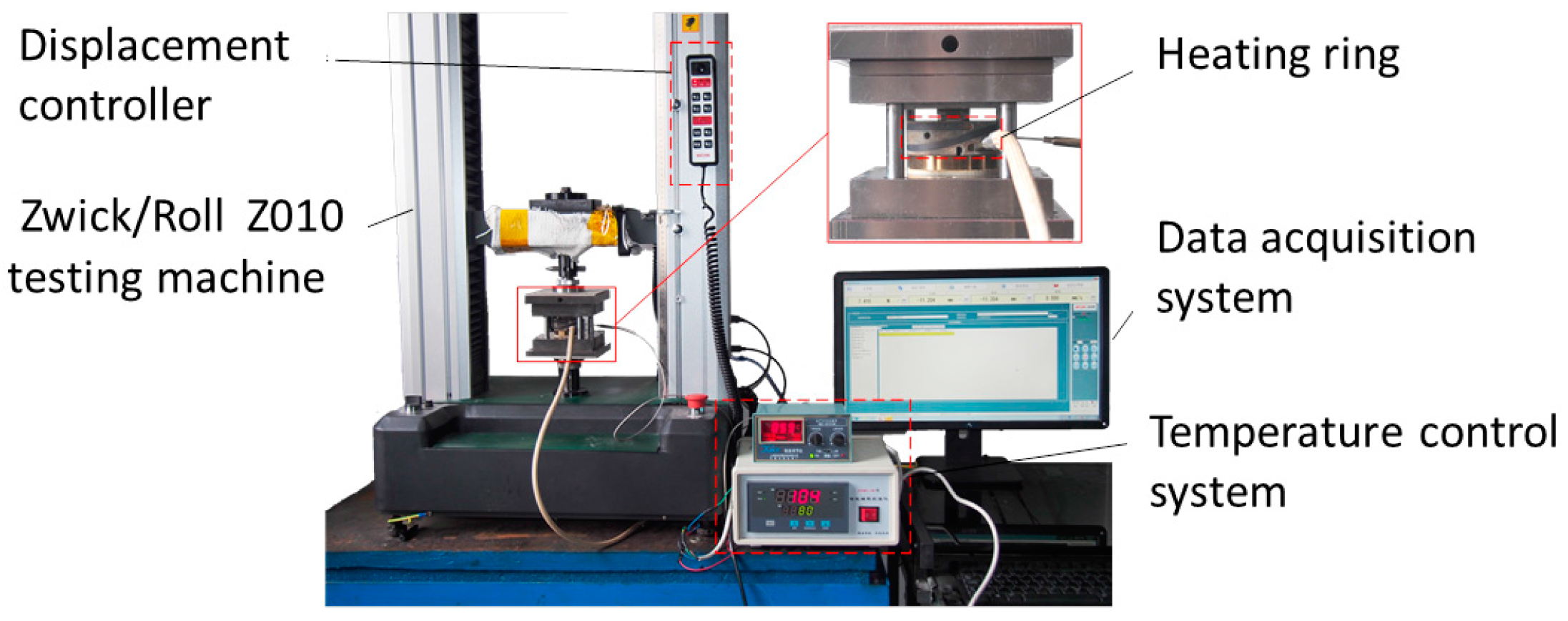

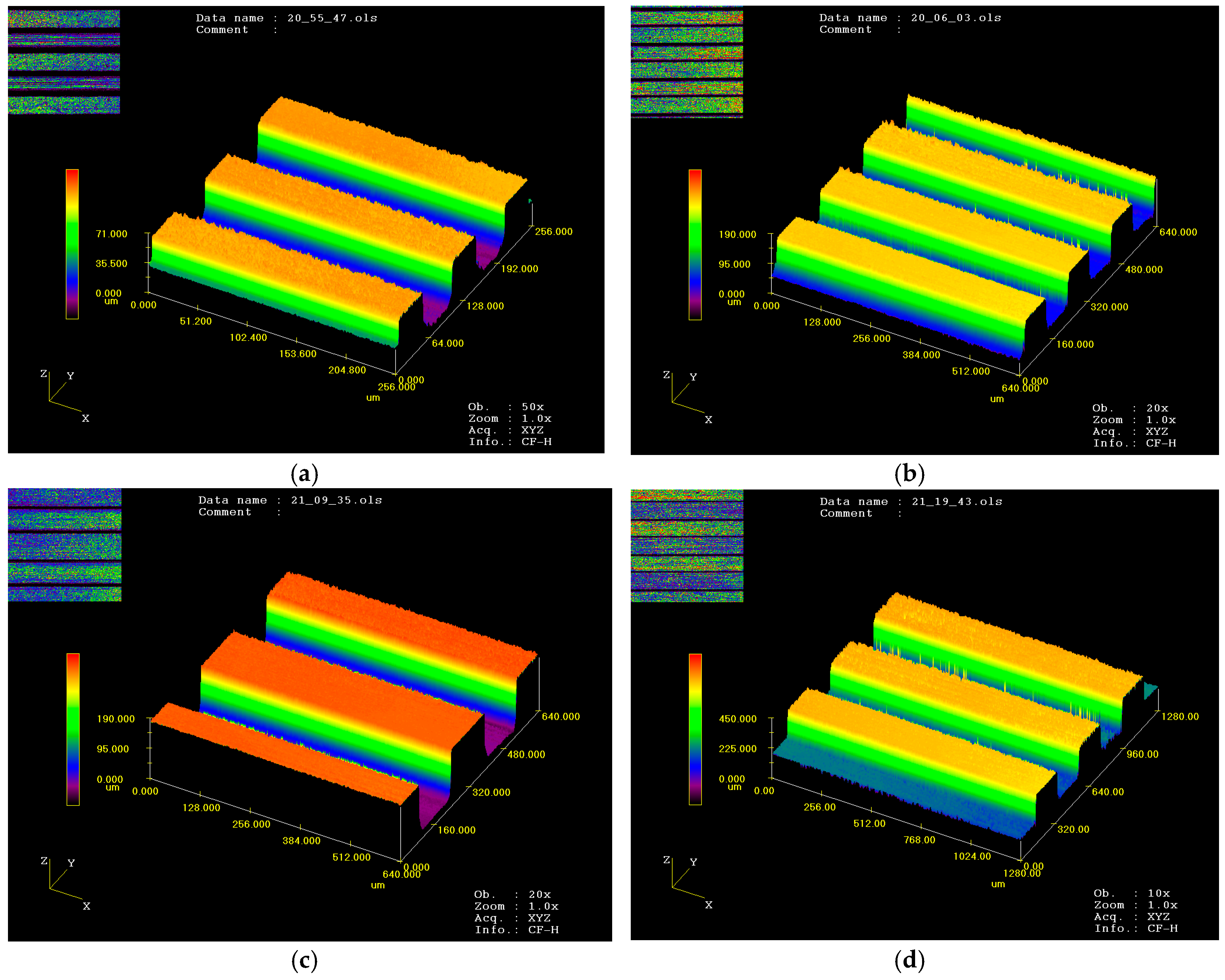
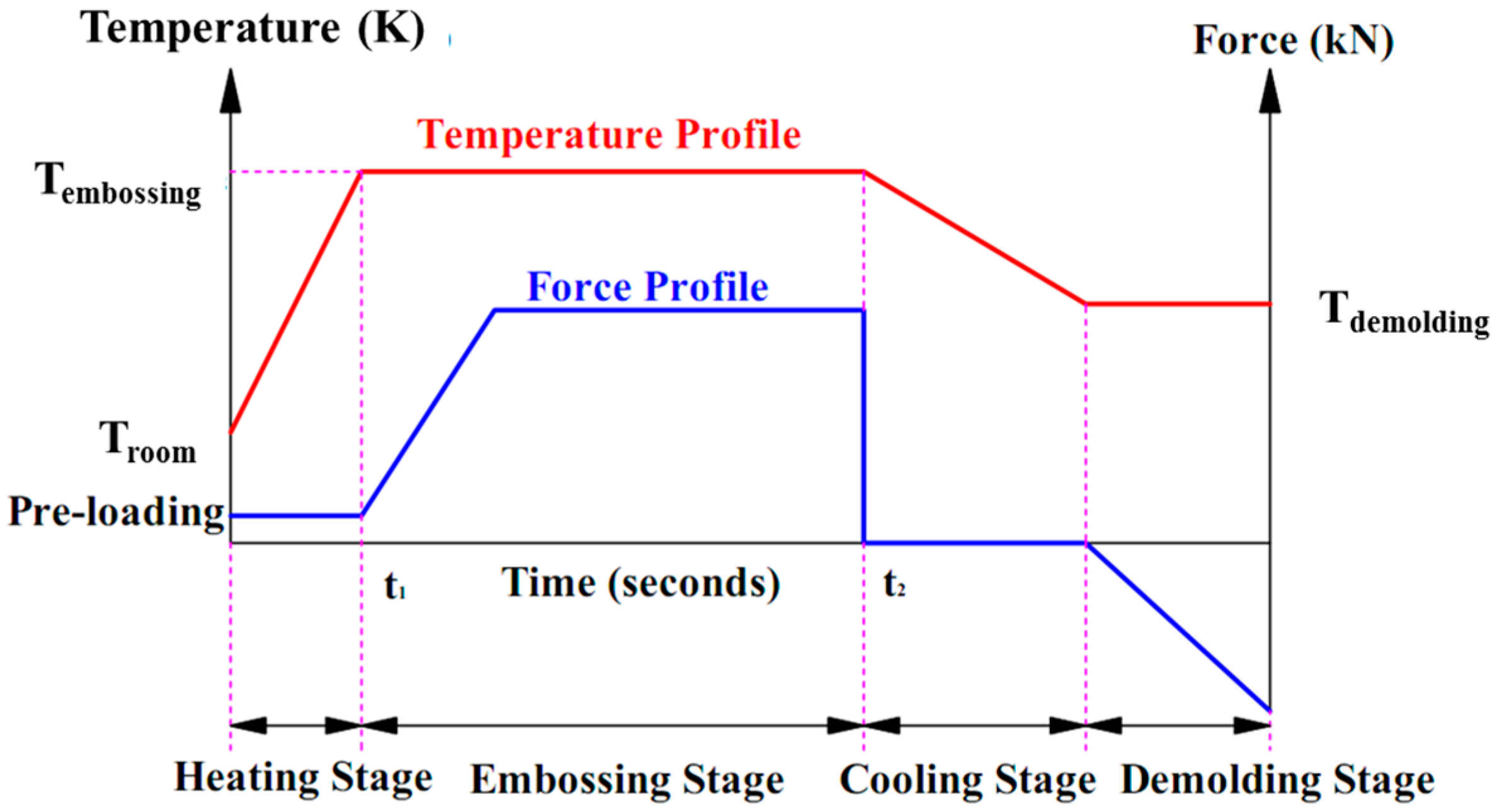
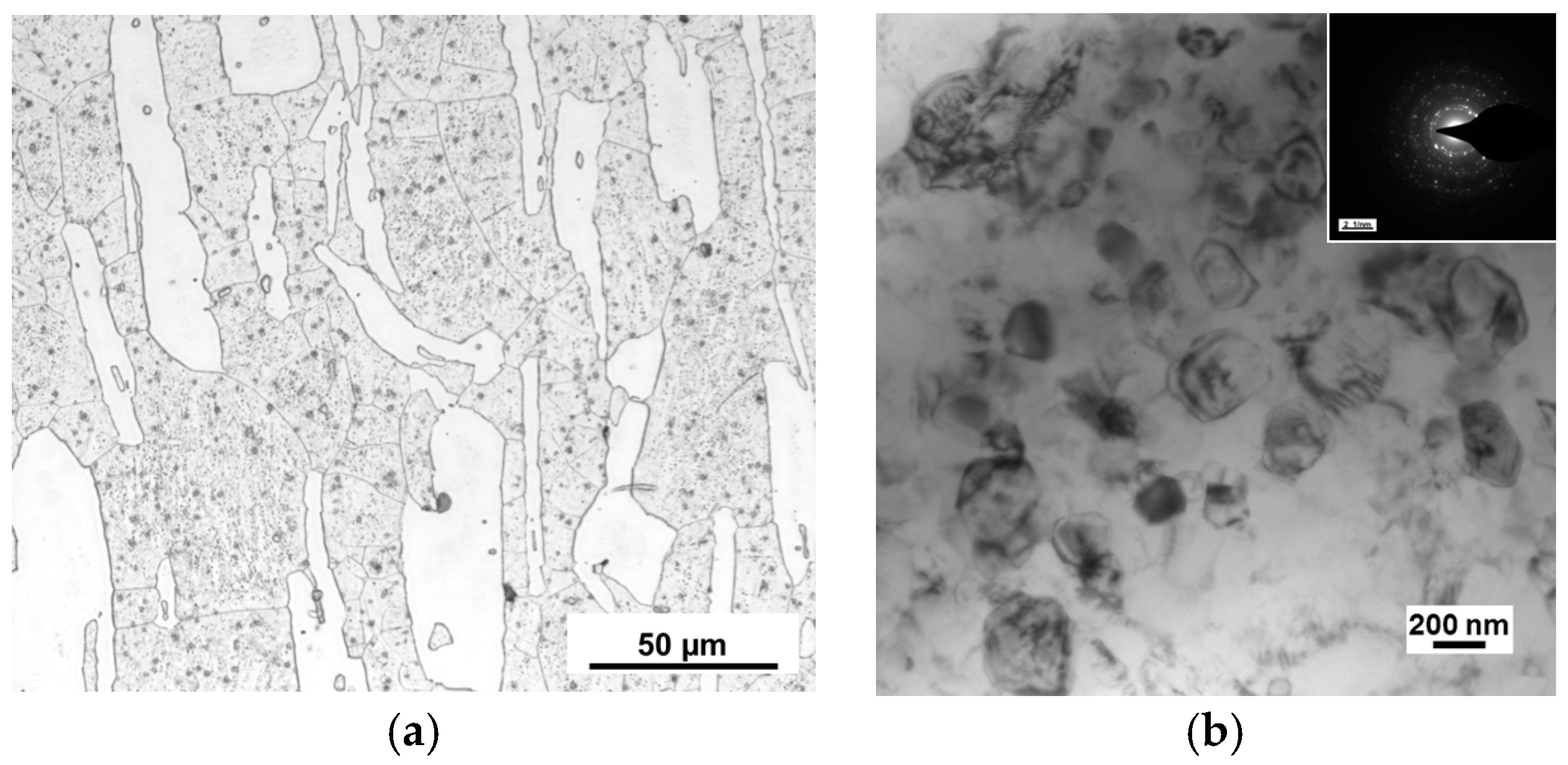
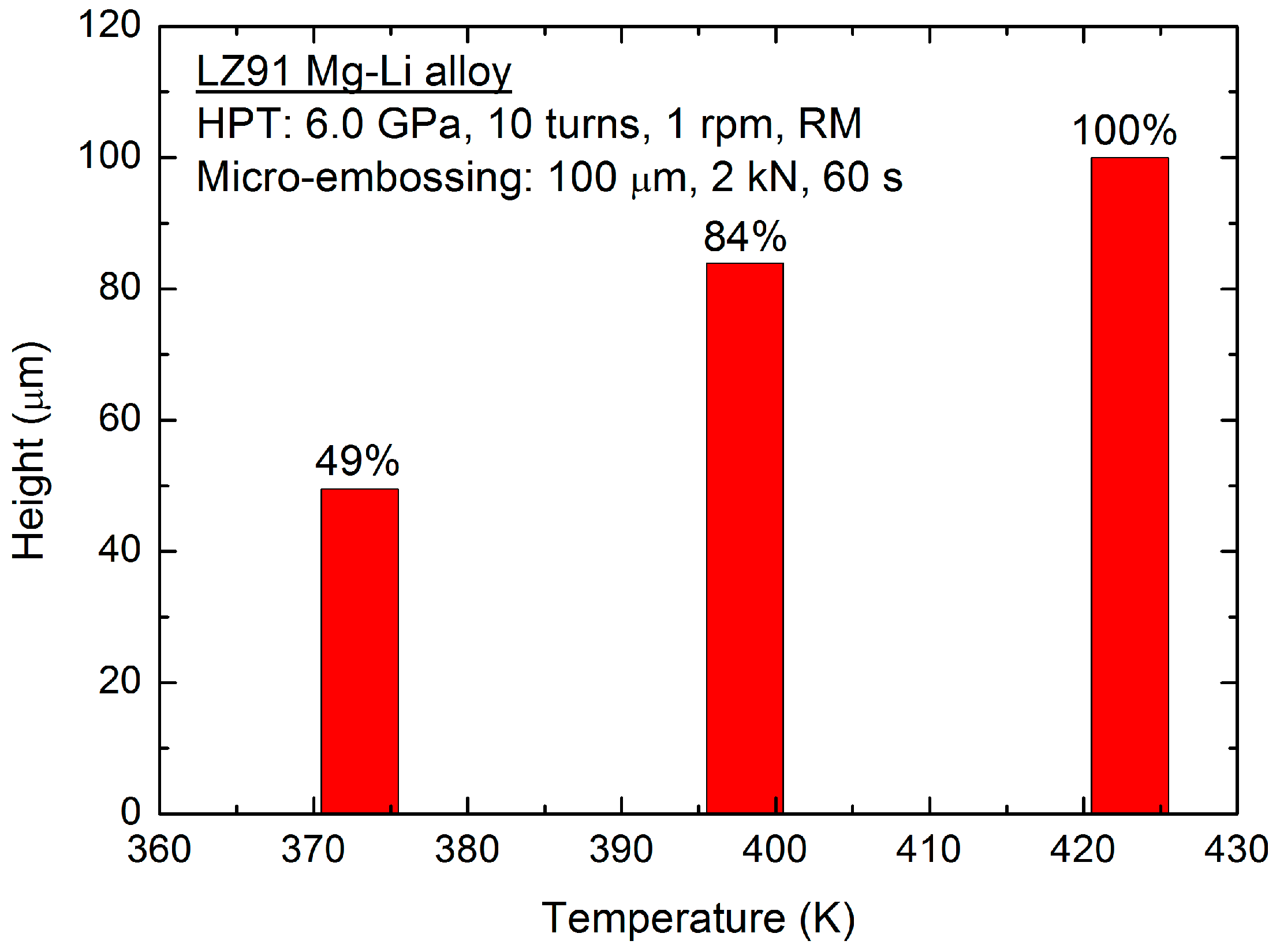
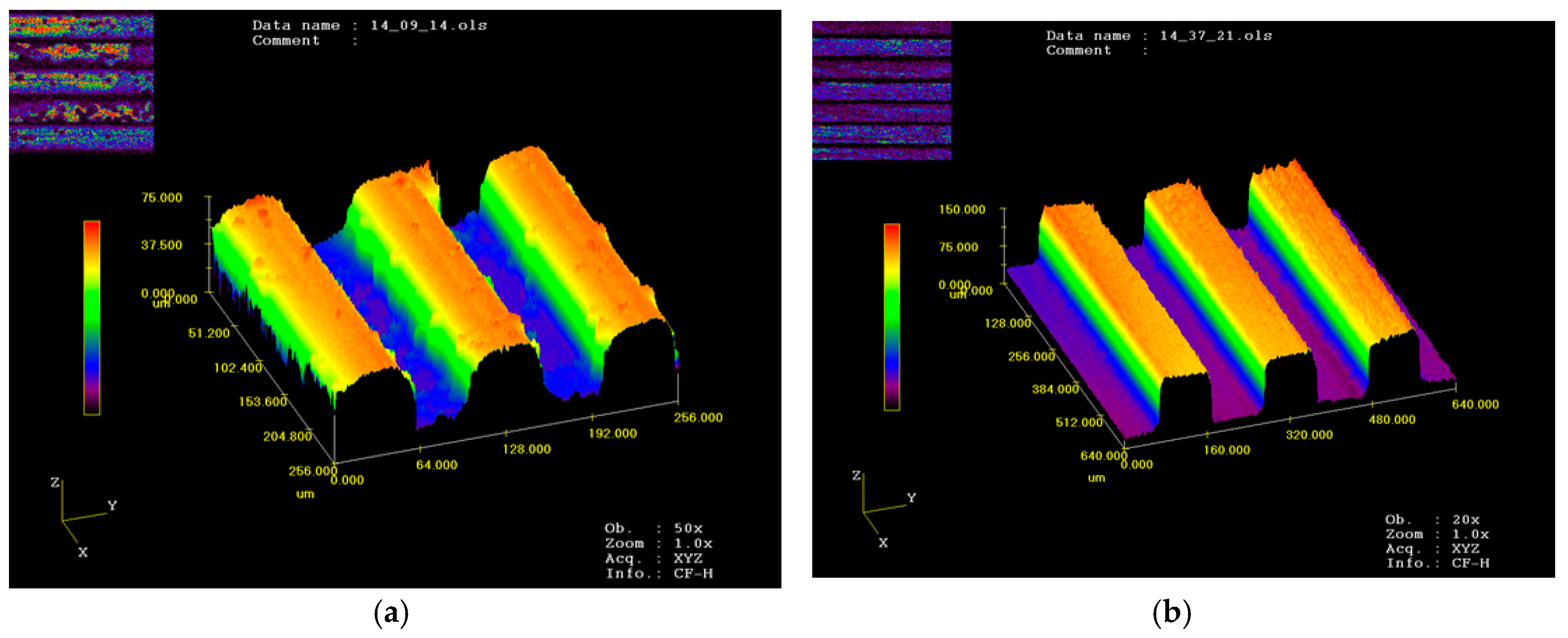


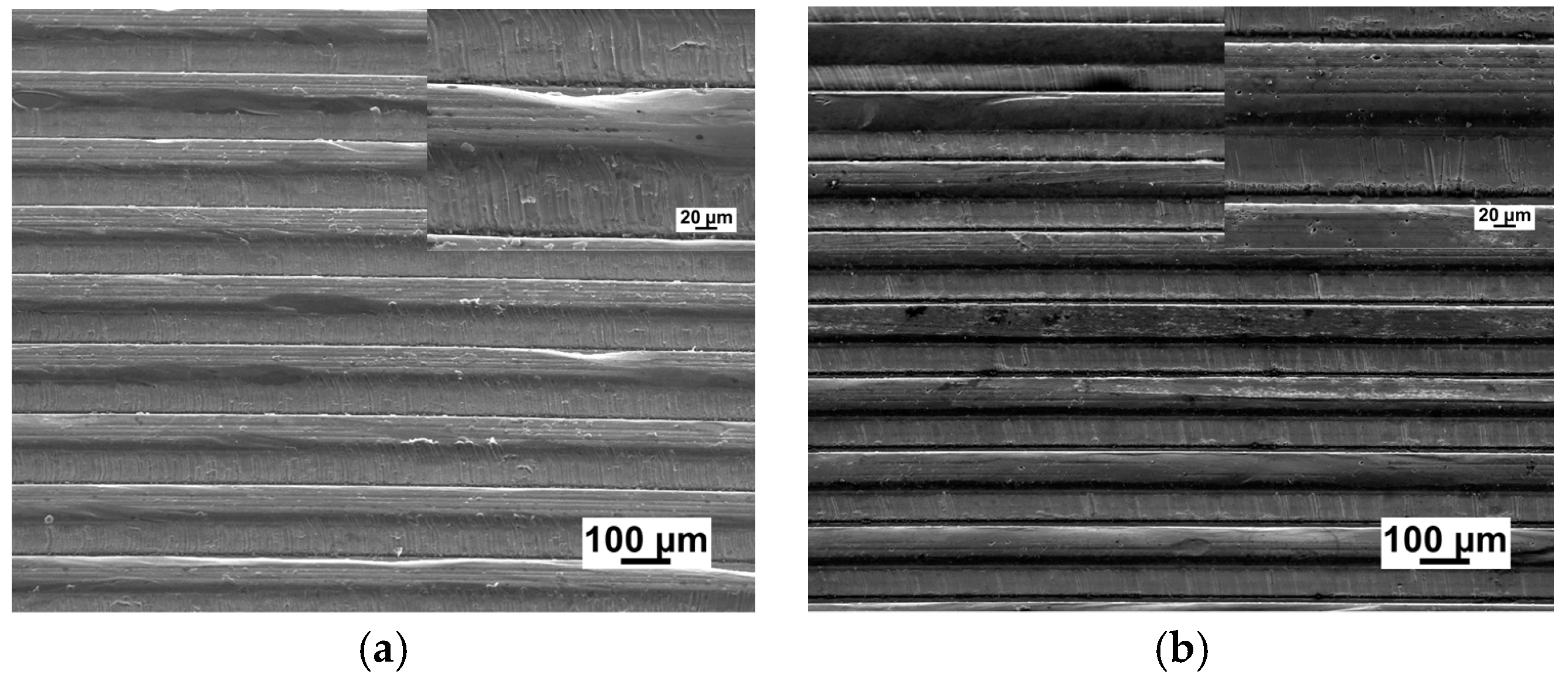
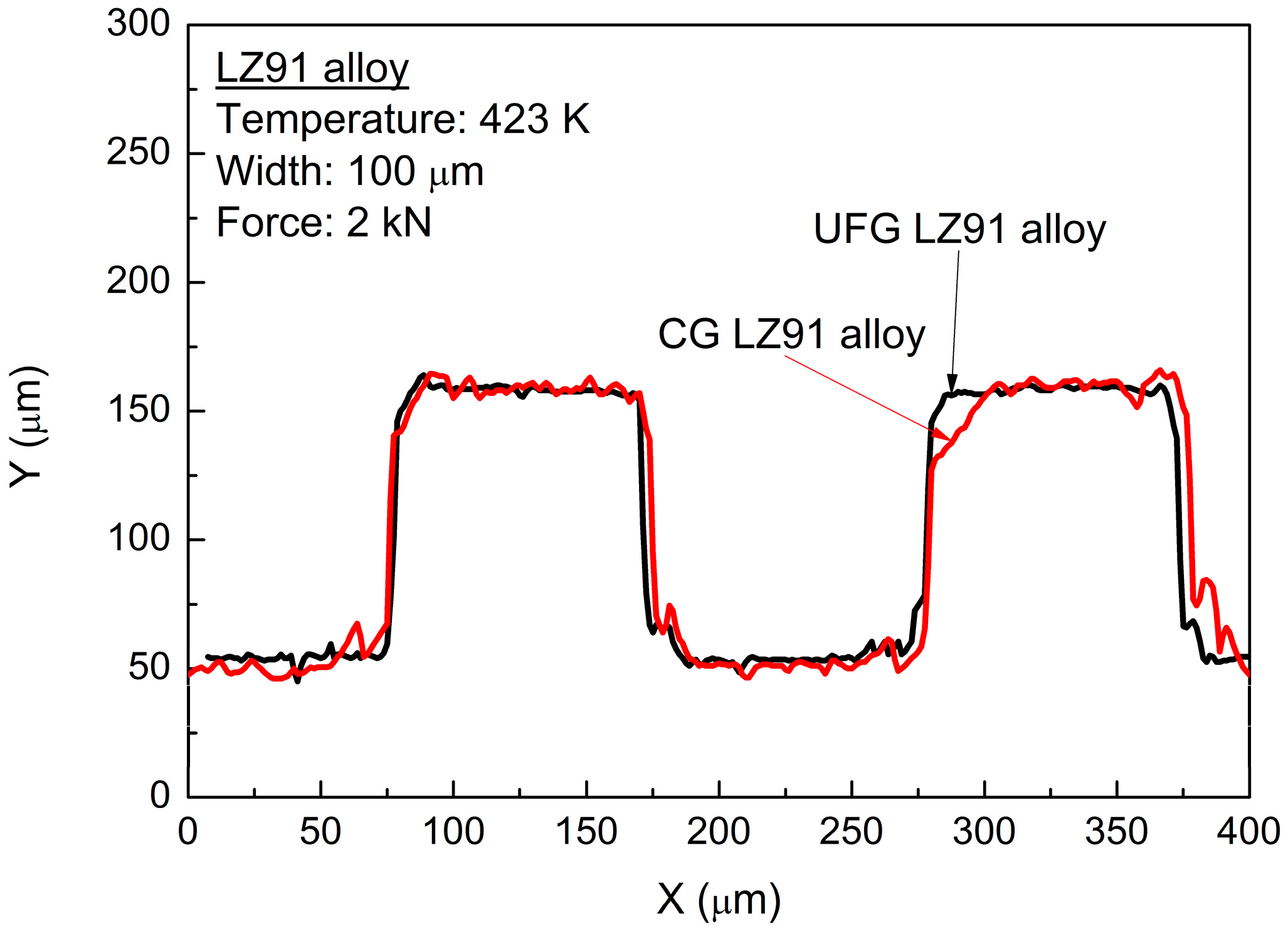
| Channel Width w | Channel Depth ho | Filling Height h |
|---|---|---|
| 50 | 50 | ~50 |
| 100 | 100 | ~100 |
| 150 | 150 | ~150 |
| 200 | 200 | ~200 |
© 2018 by the authors. Licensee MDPI, Basel, Switzerland. This article is an open access article distributed under the terms and conditions of the Creative Commons Attribution (CC BY) license (http://creativecommons.org/licenses/by/4.0/).
Share and Cite
Su, Q.; Xu, J.; Wang, C.; Shan, D.; Guo, B. The Fabrication of Micro-Array Channels with the Ultrafine-Grained LZ91 Mg-Li Alloy by Micro-Embossing. Micromachines 2018, 9, 55. https://doi.org/10.3390/mi9020055
Su Q, Xu J, Wang C, Shan D, Guo B. The Fabrication of Micro-Array Channels with the Ultrafine-Grained LZ91 Mg-Li Alloy by Micro-Embossing. Micromachines. 2018; 9(2):55. https://doi.org/10.3390/mi9020055
Chicago/Turabian StyleSu, Qian, Jie Xu, Chenxi Wang, Debin Shan, and Bin Guo. 2018. "The Fabrication of Micro-Array Channels with the Ultrafine-Grained LZ91 Mg-Li Alloy by Micro-Embossing" Micromachines 9, no. 2: 55. https://doi.org/10.3390/mi9020055




